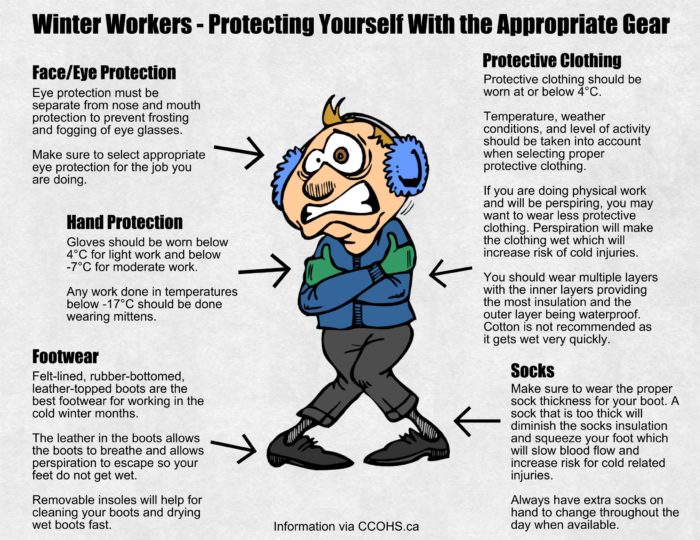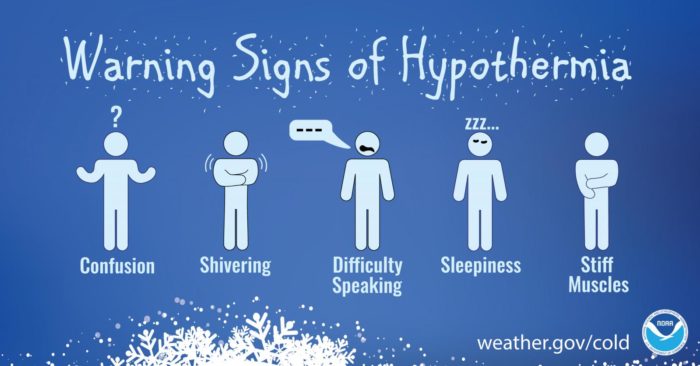
Proper Protective Clothing for Winter
Protect Yourself Against the Cold
It is important to remember to take proper precautions at work to keep yourself warm and safe during the winter months. Proper protective clothing is the key to keeping yourself safe in the workplace if you are exposed to outdoor conditions.

What are some additional prevention tips?
To prevent excessive sweating while working, remove clothing in the following order:
- Mittens or Gloves (unless you need protection from snow or ice),
- Headgear and Scarf
- Open the jacket at the waist and wrists, and
- Remove layers of clothing
As you cool down, follow the reverse order of the above steps.
Prevent contact of bare skin with cold surfaces (especially metallic) below -7°C as well as avoiding skin contact when handling evaporative liquids (gasoline, alcohol, cleaning fluids) below 4°C. Sitting or standing still for prolonged periods should also be avoided.
Balanced meals and adequate liquid intake are essential to maintain body heat and prevent dehydration. Eat properly and frequently. Working in the cold requires more energy than in warm weather because the body is working to keep the body warm. It requires more effort to work when wearing bulky clothing and winter boots especially when walking through snow.
Drink fluids often especially when doing strenuous work. For warming purposes, hot non-alcoholic beverages or soup are suggested. Caffeinated drinks such as coffee should be limited because it increases urine production and contributes to dehydration. Caffeine also increases the blood flow at the skin surface which can increase the loss of body heat.
Alcohol should not be consumed as it causes expansion of blood vessels in the skin (cutaneous vasodilation) and impairs the body’s ability to regulate temperature (it affects shivering that can increase your body temperature). These effects cause the body to lose heat and thus increase the risk of hypothermia.
